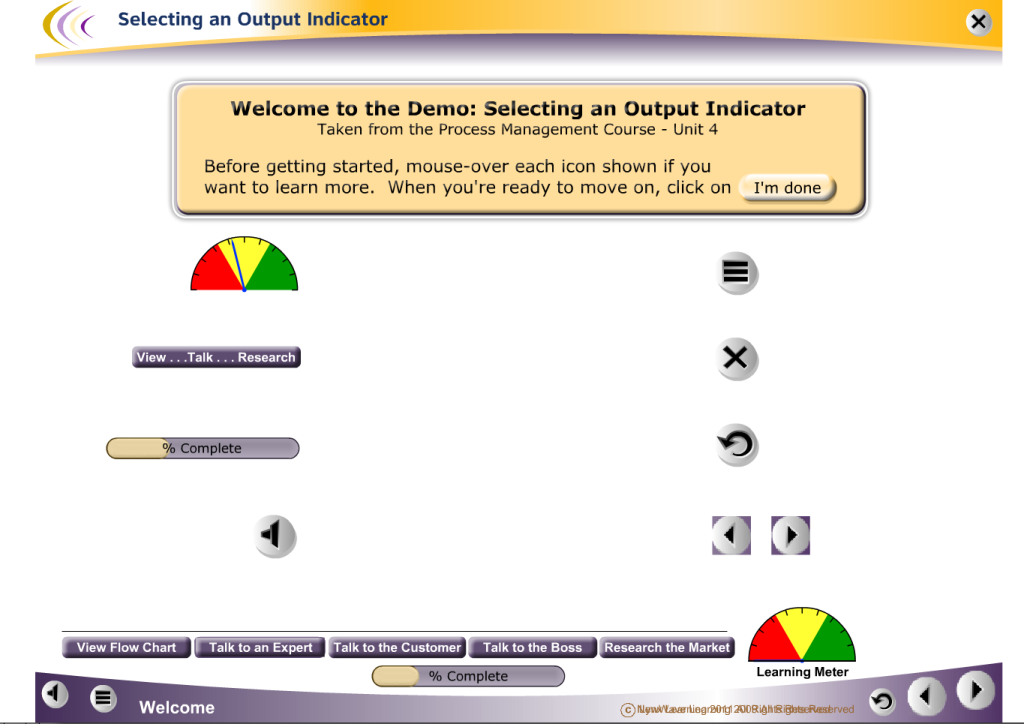Lesson 7 Motivation and Games
7-4 Segmenting and Pre-training Principles
Chapter 10 in Clark and Mayer introduces the segmenting and pretraining principles. This chapter is not required, but please do take the time to familiarize yourself with the overview and examples below.
The Segmenting Principle
Look at the number and complexity of elements, concepts, and interactions in a lesson to determine if they will overload the learner’s cognitive system. Break very long or complex lessons into segments, or chunks, so that the learner is exposed only to a more manageable amount of information at any given time. You can use elements like a continue button or lesson index to segue from one segment to another.
What to look for:
- Animation sequences pause at logical segments with provision of a replay or continue button.
- Material is presented in manageable segments (such as short clips of narrated animation) controlled by the learner, rather than as a continuous unit (such as a long clip of narrated animation).
Pretraining Principle
Provide an orientation to the names and characteristics of key concepts or elements before the main lesson material. Pretraining can be especially helpful if the lesson content uses specialized language or other unfamiliar vocabulary. A labeled diagram of a microscope, for example, could provide helpful pretraining before a lesson on analyzing medical samples.
What to look for:
- Key concepts are named and their characteristics are described before presenting the processes or procedures to which the concepts are linked.
- Concepts or terms included in pre-training are introduced in the context of the whole process or procedure.
Pre-training Example

⭐ Shar’s Note:
You may have noticed that each week the lesson has multiple pages rather than one long page with all the parts and information. For me the advantage of multiple pages outweighs the disadvantage: finite amount of time spent per page especially on a mobile device versus being able to search the whole content with a single command.
